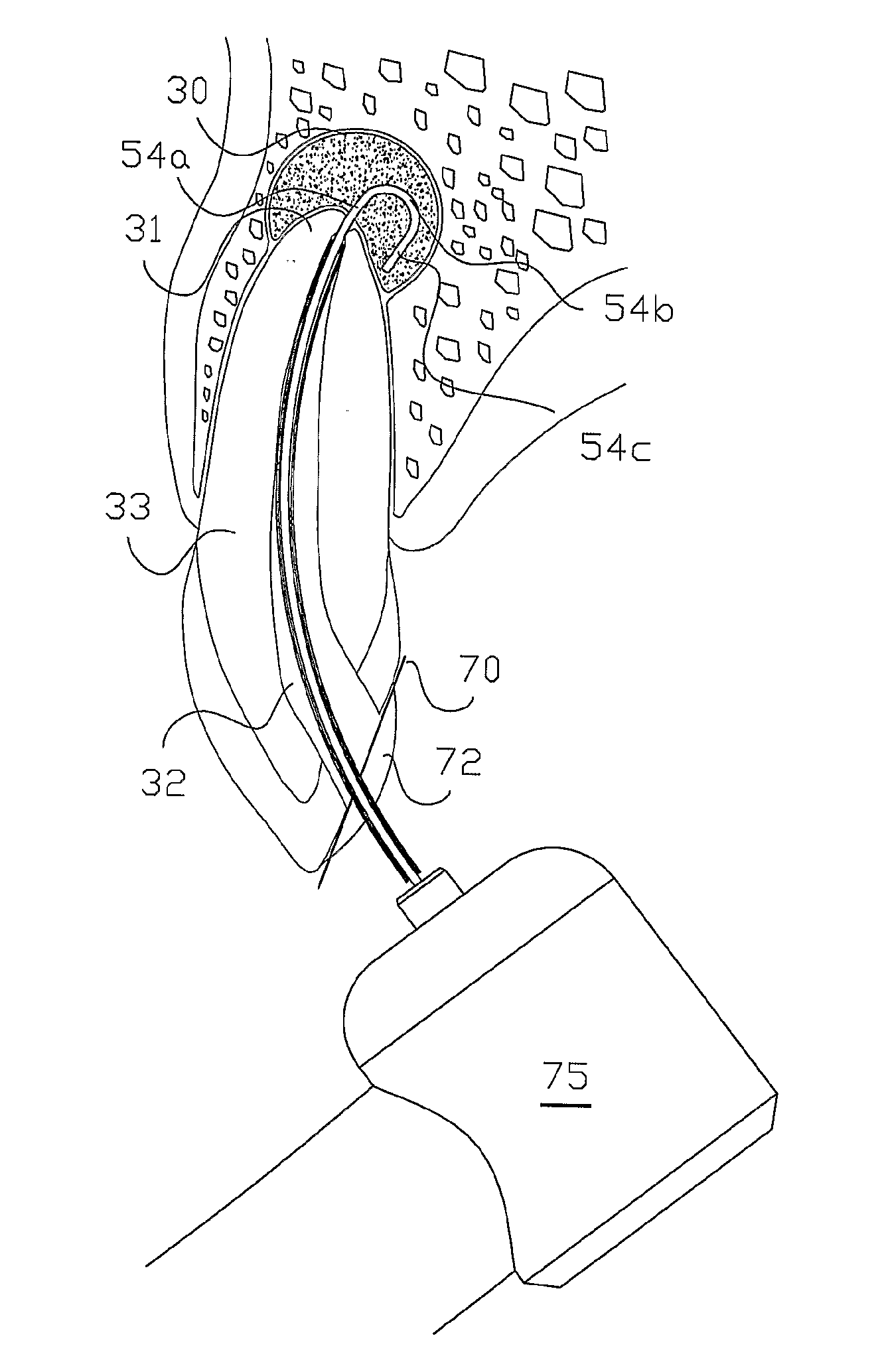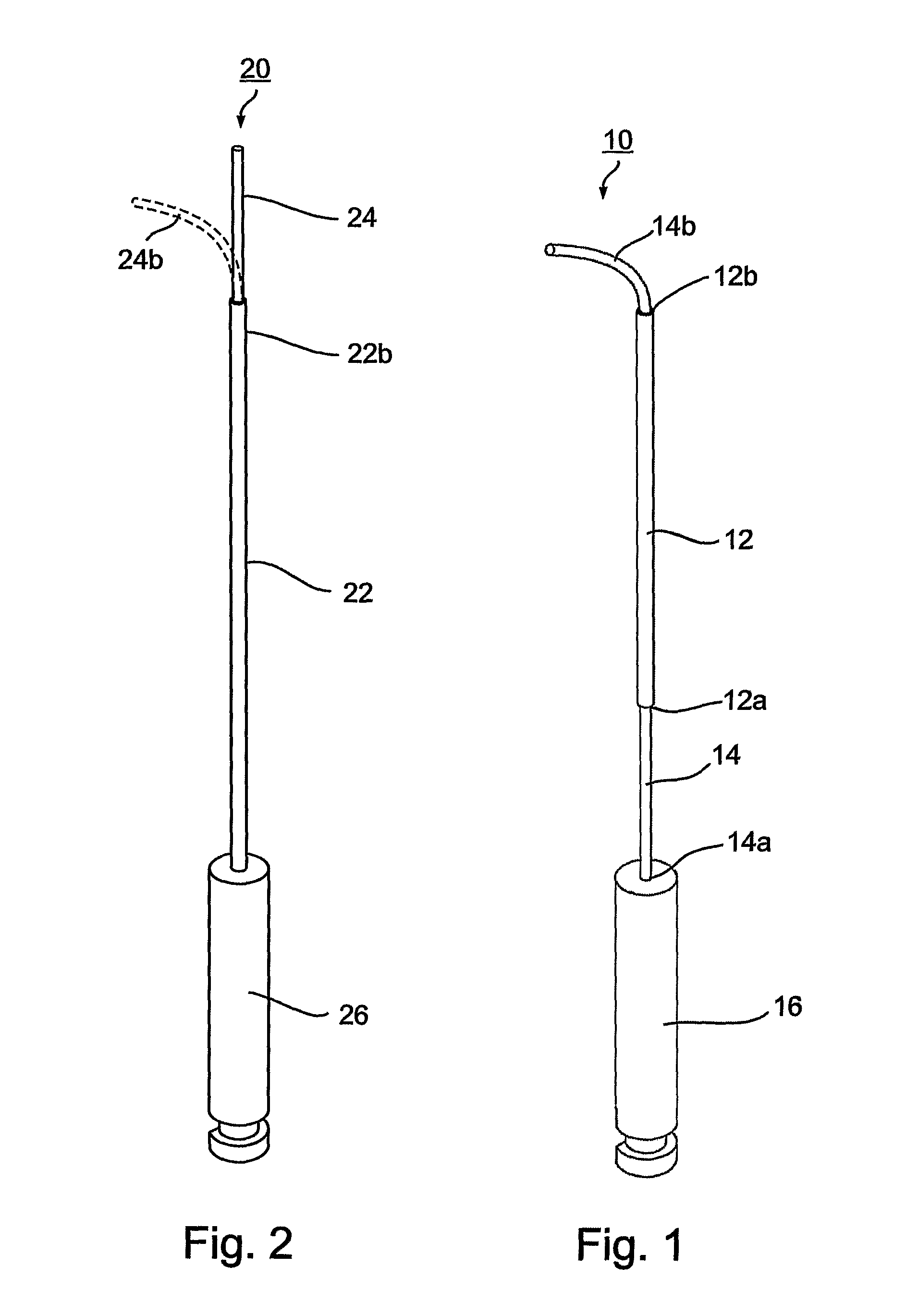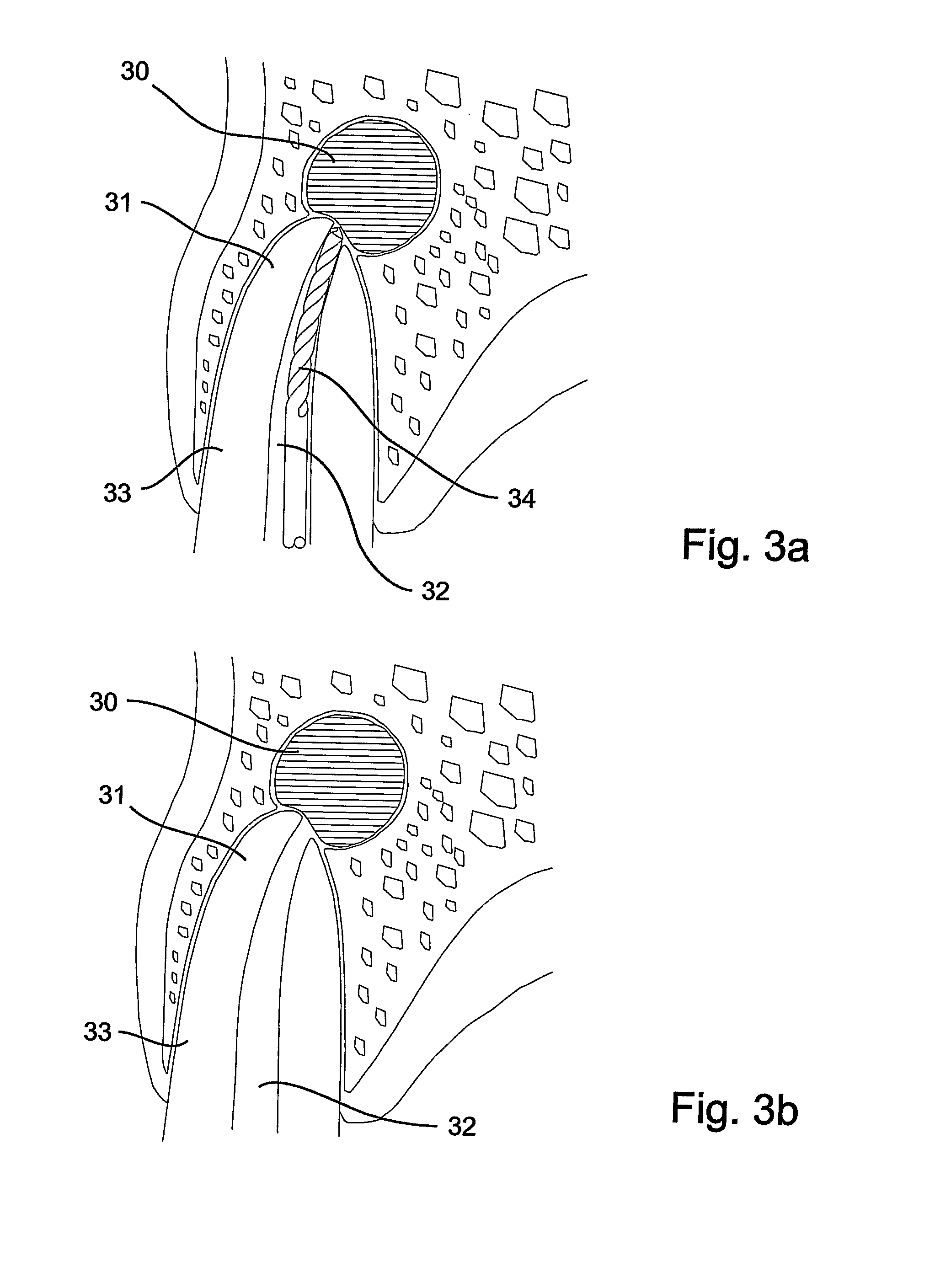Method of Treating Dental Periapical Lesions
a technology of periapical lesions and treatment methods, applied in the field of treatment methods of dental periapical lesions, can solve the problems of pulp infection or injury, pain, sensitivity to hot or cold foods, etc., and achieve the effect of promoting healing and slowing down the speed
- Summary
- Abstract
- Description
- Claims
- Application Information
AI Technical Summary
Benefits of technology
Problems solved by technology
Method used
Image
Examples
Embodiment Construction
[0039]As indicated earlier, the present invention provides apparatus particularly useful for removing dental periapical lesions at an apex of a root of a tooth. For this purpose, the apparatus provides a rotatable ablating device sized and constructed for (a) introduction through a cavity in the tooth into the root canal; (b) movement therethrough to protrude through the apical foramen into contact with the dental periapical lesion; and (c) rotation while in contact with the dental periapical lesion in order to mince the lesion by ablation so that the particles may be removed via the apical foramen.
[0040]While the invention is particularly useful for removing dental periapical lesions, it can also be used in a wide range of laparoscopic procedures, as well as less invasive subcutaneous and endoscopic procedures. The terms “laparoscopic” and “endoscopic” are interchangeably used herein to refer to surgical procedures performed through small, natural or artificially created openings o...
PUM
 Login to View More
Login to View More Abstract
Description
Claims
Application Information
 Login to View More
Login to View More - R&D
- Intellectual Property
- Life Sciences
- Materials
- Tech Scout
- Unparalleled Data Quality
- Higher Quality Content
- 60% Fewer Hallucinations
Browse by: Latest US Patents, China's latest patents, Technical Efficacy Thesaurus, Application Domain, Technology Topic, Popular Technical Reports.
© 2025 PatSnap. All rights reserved.Legal|Privacy policy|Modern Slavery Act Transparency Statement|Sitemap|About US| Contact US: help@patsnap.com



